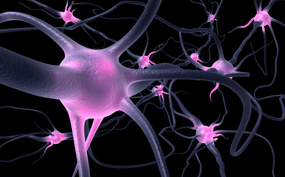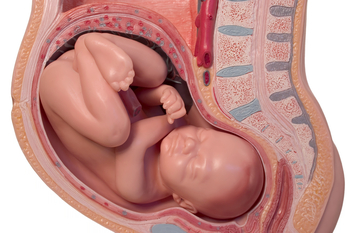Posted by Dr. Jack Sacks on May 24, 2018.
The prevalence of brain injury in the United States is alarming as it is the second leading cause of disability in the country. Often referred to as the silent epidemic, approximately 3.17- 5.3 million Americans suffer from traumatic brain injuries, another 4.7 million have brain injuries from strokes, and another 500,000 have cerebral palsy (brain injury due to an event of oxygen deprivation). Causes of brain injury that may give rise to a medical malpractice lawsuit are further described below:
 Brain Injury from Birth: a medical malpractice lawsuit may arise may when a child’s brain is negligently deprived of oxygen during pregnancy, labor and delivery. This may result in the child later developing cerebral palsy, mental retardation, seizures, blindness, deafness, and learning disabilities. Oxygen deprivation that injures a baby’s brain may arise from any of the following events:
Brain Injury from Birth: a medical malpractice lawsuit may arise may when a child’s brain is negligently deprived of oxygen during pregnancy, labor and delivery. This may result in the child later developing cerebral palsy, mental retardation, seizures, blindness, deafness, and learning disabilities. Oxygen deprivation that injures a baby’s brain may arise from any of the following events:
*Compression of the umbilical cord during delivery
*Maternal Infection present during the pregnancy or delivery
*Placental abruption or uterine rupture prior to birth
*Maternal high blood pressure during the pregnancy (preclampsia)
*Breeched vaginal position of the baby (feet first rather than head first)
*Improper administration or doasage of epidural or labor inducing drugs during the delivery
*Failure to timely perform an emergency c-section
*Fetal macrosomia (oversized baby) unable to navigate the birth canal
Brain Injury in Adults and Children: a medical malpractice lawsuit may arise as a result of errors in diagnosis and treatment of a serious medical condition. A few of the causes of brain injury in children and adults that may involve medical malpractice include:
*Medication errors
*Anesthesia errors
*Surgical errors
*Radiology errors
*Emergency room errors
*Delay in diagnosis/treatment of heart attack or cardiac arrest
*Delay in diagnosis/treatment of a stroke, aneurysm, or blood clot
*Delay in diagnosis/treatment of meningitis or encephalitis
*Delay in diagnosis/treatment of a spreading infection or abscess
*Delay in diagnosis/treatment of internal bleeding
*Delay in diagnosis/treatment of hydrocephalus
*Delay in diagnosis/treatment of diabetes/diabetic coma/insulin shock
In addition to the above mentioned causes of brain injury, many other errors involving patient treatment and care may give rise to a lawsuit. One of the most common causes occurs when a hospital patient or nursing home patient falls (due to inadequate protective measures) and the patient suffers a traumatic brain injury. In fact, falls are the leading cause of traumatic brain injury in our country surpassing even motor vehicle accidents. For a detailed guide to the incidence, prevalence, and epidemiology of brain injury, seeEssential Brain Injury Guide prepared under the auspices of the Brain Injury Association of America.
Topic: Allergic Reactions, Aneurysm, Birth Injury, Brachial Plexus Injury, Brain Injury, Cerebral Palsy, Erb's Palsy, Failure to Diagnose, Falls/Fractures, Heart Attack, High Blood Pressure, Hydrocephalus, Hypogylcemia, Infection, Lumbar Puncture, Meningitis, Paralysis, Peritonitis, Premature Birth, Shoulder Dystocia, Spinal Injury, Spinal Tap, Stroke, Surgical Mistakes Comments Off on Brain Injury and Medical Malpractice
Posted by Dr. Jack Sacks on April 30, 2018
Pericardial effusion occurs when there is an abnormal amount of fluid around the heart. The heart is normally surrounded by a thin membranous sac called the pericardium. The space between the pericardium and the muscle that is the heart is referred to as the perciardial space. Normal levels of pericardial fluid within the pericardial space are from 15 to 50 mL, or about 1-3 tablespoons.
An effusion, therefore, represents an abnormal accumulation of fluid in the pericardial space. Because of the limited amount of space in the pericardial cavity, fluid accumulation will lead to increased intrapericardial pressure and this can negatively affect heart function. Cardiac tamponade occurrs when there is a large enough pericardial effusion causing enough pressure to adversely affect heart function. This is an emergent life threatening condition.
Pericardial effusion symptoms may include difficulty breathing (dyspnea), shortness of breath when lying down (orthopnea), chest pain, cough, dizziness, low grade fever, rapid heart rate (tachycardia), and a feeling of anxiety
Pericardial effusion may be caused by:
-a disturbed equilibrium between the production and re-absorption of pericardial fluid,
-a structural abnormality that allows fluid to enter the pericardial cavity,
-inflammation of the pericardium (pericarditis)
-bacterial or viral infections
-injury to the heart from a medical procedure
-cancer
-heart attack
-autoimmune disorders
Unfortunately, pericardial effusion and cardiac tamponade may result from improper placement of a central venous catheter during a medical procedure involving an infant. This may arise when there is an inadvertent perforation into the pericardial space by the CVC and fluids are artificially infused into the space thereby causing the tamponade. Upon recognition of this situation, emergent removal of this fluid via a needle inserted through the chest wall and into the pericardial space (pericardiocentesis) can improve the infant’s chance of survival. It is suggested that routine radiography be performed to readily identify the CVC tip in all cases when these lines are placed into babies. Increased awareness of this complication may decrease the mortality associated with CVC related pericardial effusions.
Treatment depends on the underlying cause and the severity of the heart impairment. Pericardial effusion due to a viral infection sometimes goes away within a few weeks without treatment. Some pericardial effusions remain small and never need treatment. If the pericardial effusion is due to an autoimmune condition treatment with anti-inflammatory medications may help. If the effusion is compromising heart function and causing cardiac tamponade, it will need to be drained, most commonlyby a pericardiocentesis. In some cases, surgical drainage may be required by cutting through the pericardium creating what is referred to as a pericardial window.
Topic: Brain Injury, Cerebral Palsy, Failure to Diagnose, Heart Attack, Heart Defect, Infection, Paralysis Comments Off on Increased Fluid Around the Heart May Cause Cardiac Tamponade
The brain is responsible for higher motor and sensory functions. It requires a constant source of oxygen in order to continue its vital functions. When the flow of oxygen is interrupted, the consequences can be devastating. Severe injury can occur when the brain lacks the oxygen needed to continue functioning. A total lack of oxygen can be referred to as “anoxic” injury whereas a partial lack of flow can be referred to as “hypoxic” injury.
Brain injury can occur in an unborn baby if the flow of oxygen from the mother’s circulation to the baby’s is interrupted. This can happen from a number of causes. For example, the placenta can become partially detached from the wall of the uterus (placental abruption), which can interrupt the flow of oxygen to the baby. This complication can arise in pregnant patients with untreated or inadequately treated high blood pressure. Close monitoring of mother and baby, along with timely delivery and/or C-Section when needed can prevent these complications.

Excessive contractions of the uterus (sometimes called “uterine hyperstimulation” or “tetanic contractions”) from labor, or from medicines used to accelerate labor, like pitocin, can cause problems with the baby’s oxygen supply. The rapid, powerful contractions of the uterus can prevent maternal oxygen from reaching the baby. If the flow of oxygen to the baby is interrupted, hypoxic or anoxic brain injury can occur. The consequences of this can be severe and may include seizures, brain damage, developmental delay, cerebral palsy, and other problems with motor or cognitive functions. Use of medications like pitocin must be closely monitored by dosage and effect on the mother and baby. If contractions are too strong or too frequent, the dosage may need to be decreased, the medicine may need to be stopped entirely, or special medication to reverse the effects may be given.
Brain injuries may occur in infants, children, and adults. Stroke, cardiac arrest, or choking can all interrupt the flow of oxygen to the brain. Patients who are undergoing surgery, or are in an intensive care unit in a hospital often have their oxygen levels monitored to be sure they are getting a sufficient supply. If they are not properly monitored or complications occur, hypoxic or anoxic brain injuries may result.
Medical malpractice that results in brain injury is devastating for the victim as well as families and loved ones. The extent of disability from hypoxic or anoxic brain injury varies greatly, but many people require extensive care and rehabilitation to regain function and improve their quality of life.
Topic: Birth Injury, Brain Injury, Cerebral Palsy, Failure to Diagnose, High Blood Pressure, Placental Abruption Comments Off on Brain Injuries and Birth
Premature birth can often result in complications for the newborn. Preterm or premature birth refers to babies born before 37 weeks of a normal 40 week long pregnancy.
Some complications that can affect babies born prematurely are lung complications from lack of pulmonary maturity or development. Eye problems can result in vision difficulties or blindness. Premature babies may be more prone to infections and intestinal problems. They also are at increased risk for bleeding in the brain which can have devastating effects. Conditions ranging from learning disabilities to cerebral palsy and seizures are more common in babies born prematurely.
Thus it is extremely important that premature labor be diagnosed in a timely fashion by the patient’s health care provider. Steps can be taken to treat the underlying cause of the preterm labor. For example, if a maternal infection is present that is related to the preterm contractions , the infection needs to be diagnosed and treated. Certain conditions, such as twins, increase the risk of premature labor. Also, some anatomic abnormalities of the cervix or uterus can elevate the risk as well.
Although it may not be possible to prevent premature birth, certain steps can be taken to prolong the time until delivery. This may give time for medications to be administered that may significantly improve the newborns outcome by enhancing lung development or decreasing the risk of intestinal problems. Infections that are properly diagnosed and treated may likewise improve the premature baby’s situation.
Medical malpractice may occur when a pregnant patient’s symptoms, such as premature contractions, bleeding, or rupture of membranes are not properly evaluated and managed. If needed interventions such as medication to improve lung function, or antibiotics, are not given in cases where they are indicated, malpractice may have occurred. An evaluation by attorneys with experience and knowledge of these complex medical and legal issues can help clarify issues for victims of medical malpractice.
Topic: Birth Injury, Brain Injury, Cerebral Palsy, Failure to Diagnose, Infection, Placental Abruption, Premature Birth Comments Off on Premature Birth May Result in Injury to the Newborn
 Brain Injury from Birth: a medical malpractice lawsuit may arise may when a child’s brain is negligently deprived of oxygen during pregnancy, labor and delivery. This may result in the child later developing cerebral palsy, mental retardation, seizures, blindness, deafness, and learning disabilities. Oxygen deprivation that injures a baby’s brain may arise from any of the following events:
Brain Injury from Birth: a medical malpractice lawsuit may arise may when a child’s brain is negligently deprived of oxygen during pregnancy, labor and delivery. This may result in the child later developing cerebral palsy, mental retardation, seizures, blindness, deafness, and learning disabilities. Oxygen deprivation that injures a baby’s brain may arise from any of the following events:

